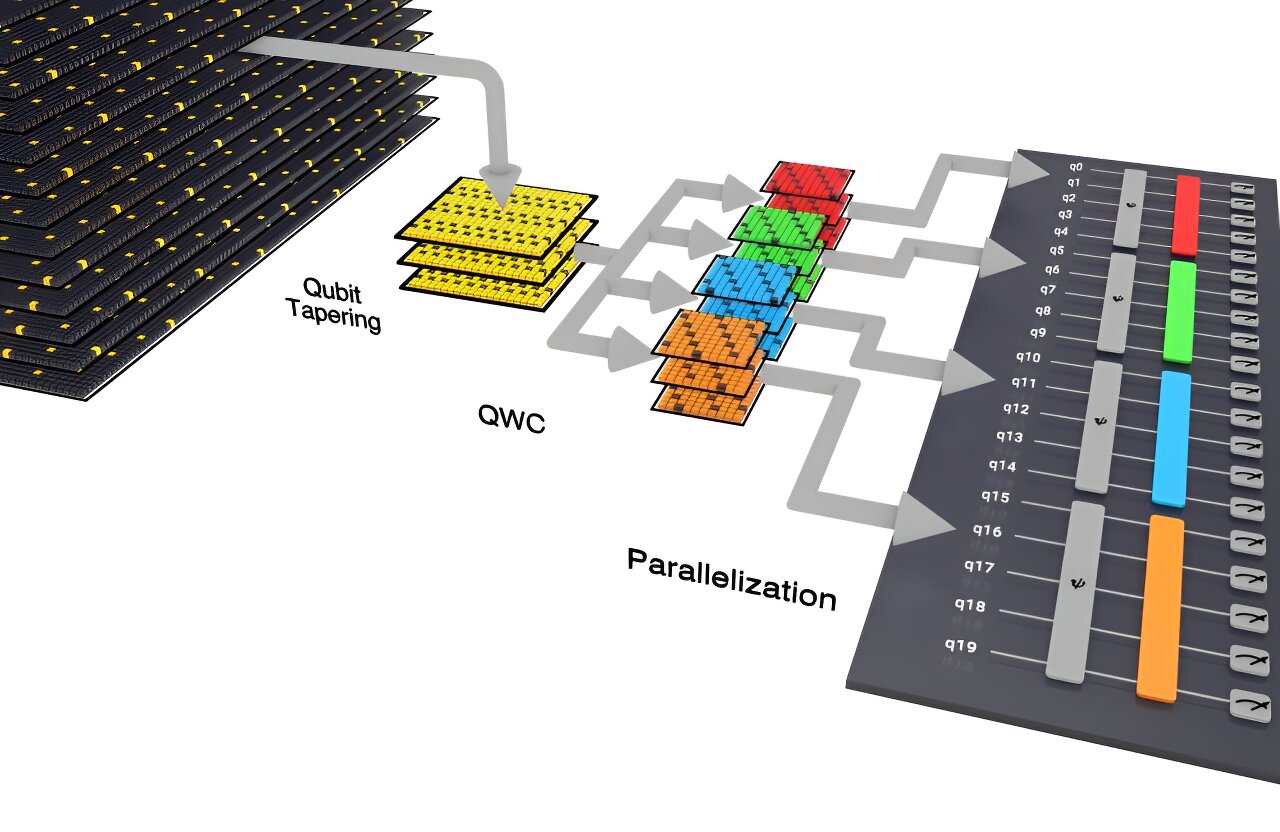Using the full capabilities of the Quantinuum H1-1 quantum computer, researchers from the Department of Energy’s Oak Ridge National Laboratory not only demonstrated best practices for scientific computing on current quantum systems but also produced an intriguing scientific result.
By modeling singlet fission—in which absorption of a single photon of light by a molecule produces two excited states—the team confirmed that the linear H4 molecule’s energetic levels match the fission process’s requirements. The linear H4 molecule is, simply, a molecule made of four hydrogen atoms arranged in a linear fashion.
A molecule’s energetic levels are the energies of each quantum state involved in a phenomenon, such as singlet fission, and how they relate and compare with one another. The fact that the linear molecule’s energetic levels are conducive to singlet fission could prove to be useful knowledge in the overall effort to develop more efficient solar panels.
“This is one of the leading motivating factors behind singlet fission—conventional solar cells have a theoretical maximum efficiency of about 33%, but it has been postulated that materials that exhibit singlet fission can break that limit and can be more efficient,” said Daniel Claudino, a research scientist in ORNL’s Quantum Computational Science group and the project’s principal investigator. “The downside is that to understand fundamentally whether a certain material exhibits singlet fission is very hard. There is a specific energetic requirement, and it’s difficult to find materials that fulfill it.”
With its high accuracy for a manageable computational cost, the ORNL team’s approach to using a quantum computer provides an effective simulation method to identify molecules that demonstrate singlet fission properties while bypassing approximations commonly found in techniques used for classical computers. The results of its work were published in The Journal of Physical Chemistry Letters.
2023-07-28 18:48:02
Article from phys.org
